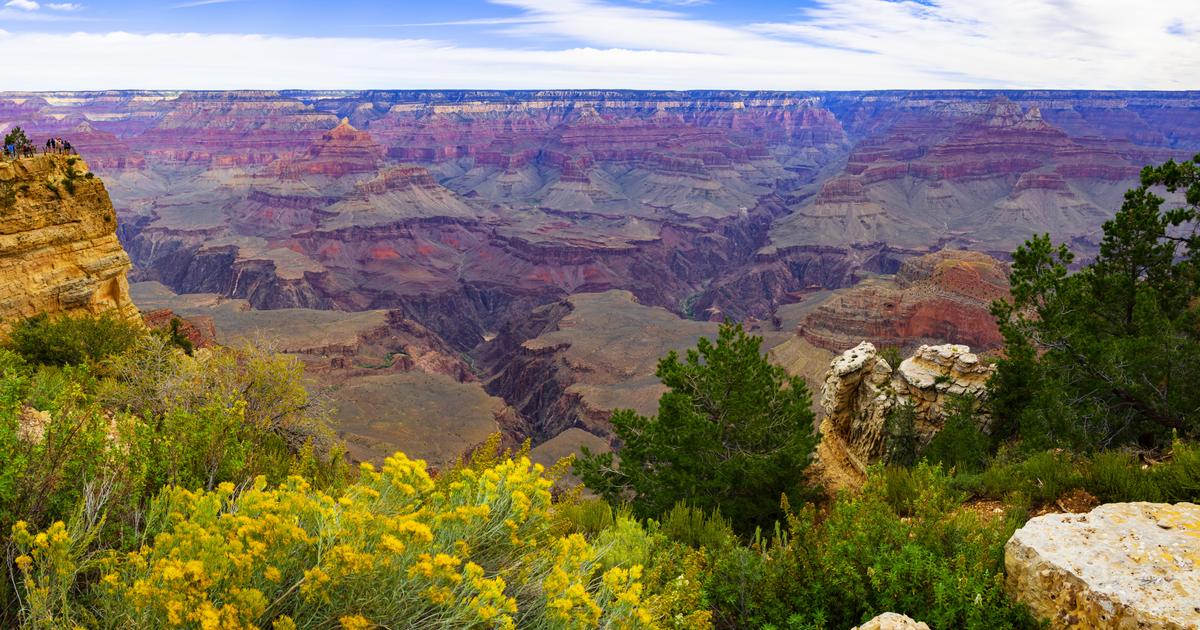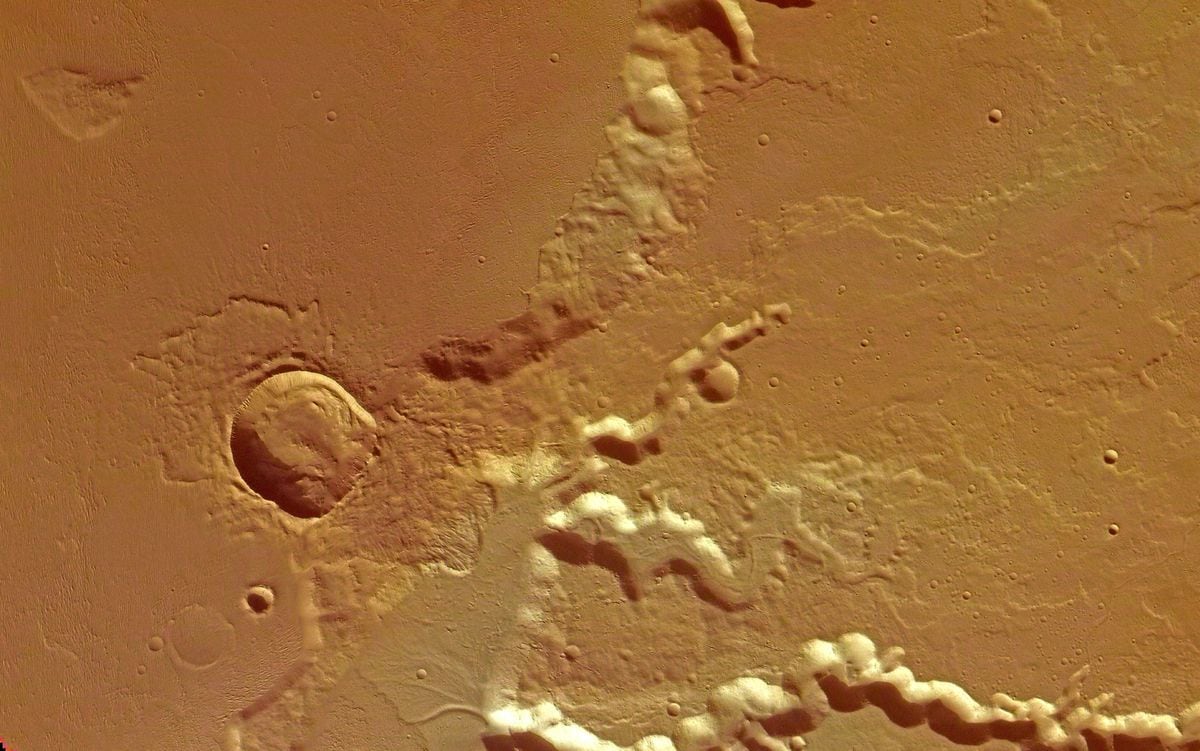This is how they will bring the samples from Mars to Earth 1:41
(CNN) -
Mars has its own version of the Grand Canyon, and scientists found that this dramatic feature is home to "significant amounts of water" after a discovery by an orbiter circling the red planet, according to the European Space Agency.
The ExoMars Trace Gas Orbiter, launched in 2016 as a joint mission between the European Space Agency and Roscosmos, detected water in Valles Marineris on Mars.
This canyon system is 10 times longer, five times deeper, and 20 times wider than the Grand Canyon.
The water lies below the surface of the canyon system and was detected by the orbiter's FREND instrument, or Fine Resolution Epithermal Neutron Detector.
This instrument is capable of mapping hydrogen in the upper meter of Martian soil.
Most of the water on Mars is found in the planet's polar regions and remains frozen as ice water.
Valles Marineris is located south of the planet's equator, where temperatures are generally not cold enough for water ice to remain.
The observations were collected by the orbiter between May 2018 and February 2021. Previously, other orbiters searched for water just below the Martian surface and detected small amounts under the Martian dust.
A study detailing the findings published Wednesday in the journal Icarus.
advertising
Why is Ingenuity suspending its flights on Mars?
1:16
"With (the Trace Gas Orbiter) we can look down to a meter below this layer of dust and see what is really happening below the surface of Mars and, more importantly, locate 'oases' rich in water. they couldn't be detected with instruments, "study author Igor Mitrofanov, principal investigator at the FREND neutron telescope, said in a statement.
FREND revealed an area with an unusually large amount of hydrogen in the colossal Valles Marineris canyon system: assuming the hydrogen we see is bound to water molecules, up to 40% of the near-surface material in this region appears to be water. ".
To put that in perspective, this area is roughly the size of the Netherlands.
It overlaps with Candor Chaos, a network of valleys within the canyon system.
The FREND instrument looks for neutrons to map the hydrogen content in Martian soil.
"We can deduce how much water is in a soil by looking at the neutrons it emits," study co-author Alexey Malakhov, senior scientist at the Space Research Institute of the Russian Academy of Sciences, said in a statement.
That's because "neutrons are produced when highly energetic particles known as 'galactic cosmic rays' collide with Mars; drier soils emit more neutrons than wetter ones," he explained in the same statement.
"We found that a central part of Valles Marineris was filled with water, much more water than we expected. This is very similar to permafrost regions on Earth, where water ice persists permanently under dry soil due to low temperatures. constant ".
Rover Curiosity sends artistic landscape photo from Mars 0:49
The instrument's unique observing capabilities allowed the team to detect previously hidden water, Malakhov said.
This could be ice water or water attached to minerals in the soil.
But scientists believe that the presence of ice is more likely because the minerals in this place contain little water.
There are higher temperatures near the equator on Mars, so the researchers believe there must be a special combination of conditions that allow the water to remain and replenish itself.
"This finding is an amazing first step, but we need more observations to know for sure what kind of water we are dealing with," study co-author Håkan Svedhem, a former orbiter project scientist, said in a statement.
"The finding demonstrates the unmatched abilities of TGO instruments to allow us to 'see' below the surface of Mars, and reveals a large, not too deep and easily exploitable reservoir of water in this region of Mars."
Future missions to Mars will land at lower latitudes.
This discovery at Valles Marineris highlights the feature as an intriguing location for potential human exploration for years to come, especially as this water would be much more accessible than other previously discovered groundwater sources.
"Knowing more about how and where water exists on Mars today is essential to understanding what happened to water that was once abundant on Mars, and helps us look for habitable environments, possible signs of past life, and early organic materials. Mars days, "said Colin Wilson, ESA's ExoMars Trace Gas Orbiter project scientist, in a statement.
In 2022, the European rover Rosalind Franklin and the Russian surface platform Kazachok will be launched and is expected to land on Mars in 2023. The rover will drill below the Martian surface in search of organic material that can reveal whether Mars ever harbored life.
The rover will explore Oxia Planum, a site of ancient exposed clay-rich rocks that were once exposed to water.
Mars







